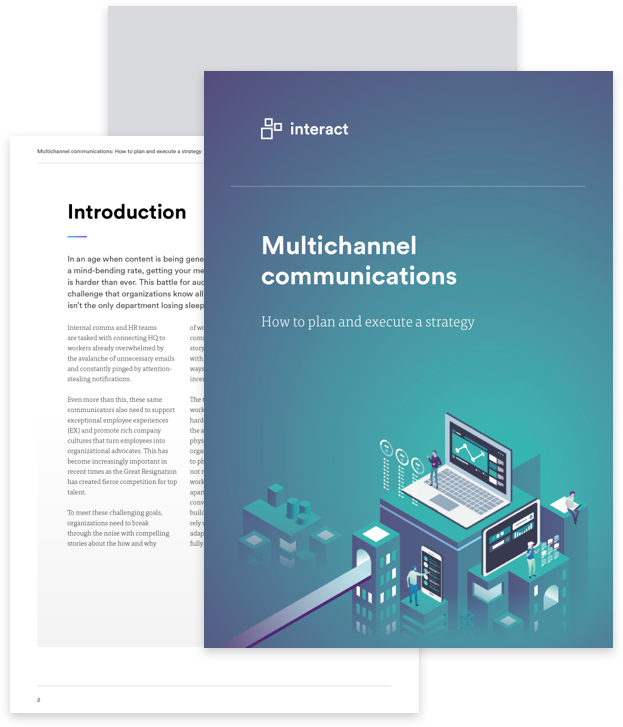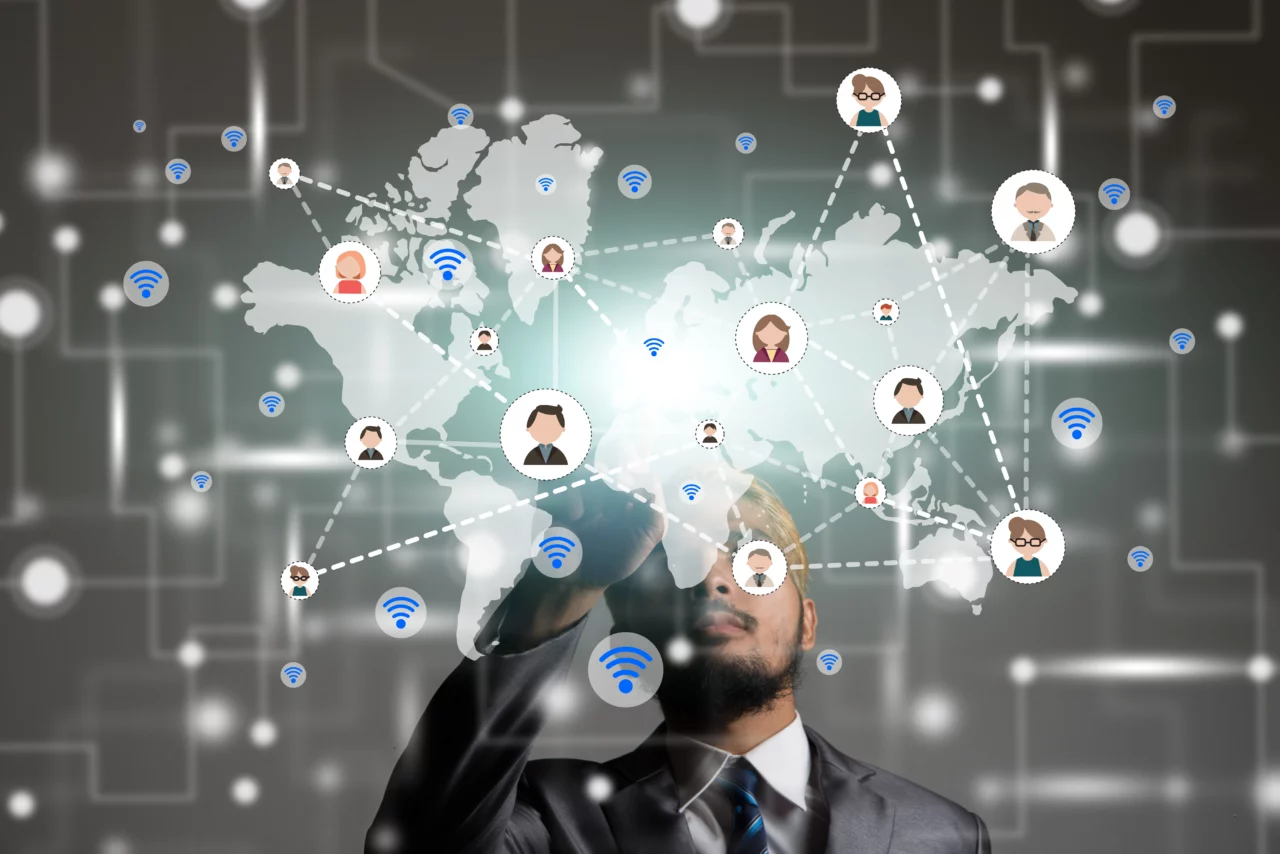In this multichannel world, the key to effective internal communication lies in understanding your audience and utilizing the most relevant internal communication channels for each message. This article sets out how internal communicators should select communication channels for optimal reach and engagement.
If your organization wants to communicate effectively with consumers, it will likely have to adopt a multichannel communication strategy that delivers content via social media, email, advertising, and location-based channels such as digital signage. Consumers have busy lives and access to a wide range of media, so it’s no surprise that their attention is divided.
Employees are no different. We expect our employers to speak to us across a range of channels, both physical and digital. This means internal communicators in every team must understand how, when, and where these messages will be optimally received.
Whether you’re conveying important policies, introducing new products, or celebrating significant company achievements, ensuring the use of the right internal communication channels can help messages reach and connect with your audience more effectively.
Table of Contents:
Why Multichannel Communication is the Way Forward
Before we dive in on how to choose the best internal communication channels, let’s explore why multichannel communication is important.
Despite the rise of messaging platforms such as Slack and Teams, many organizations are still relying on traditional internal communications strategies, and some are struggling to understand where and how all the channels available fit into their comms strategies.
Multichannel communications: How to plan and execute a strategy
Recent studies explain why it’s important to adapt to using different internal communication channels in a multichannel world:
- 70% of employees want to receive company news and updates through multiple channels according to Gartner.
- Employees who receive information through multiple channels are 20% more likely to be engaged with their work according to Cisco’s Workforce of the Future
- Companies that use multichannel internal comms have 30% lower employee turnover rates according to SAP’s State of Employee Engagement study.
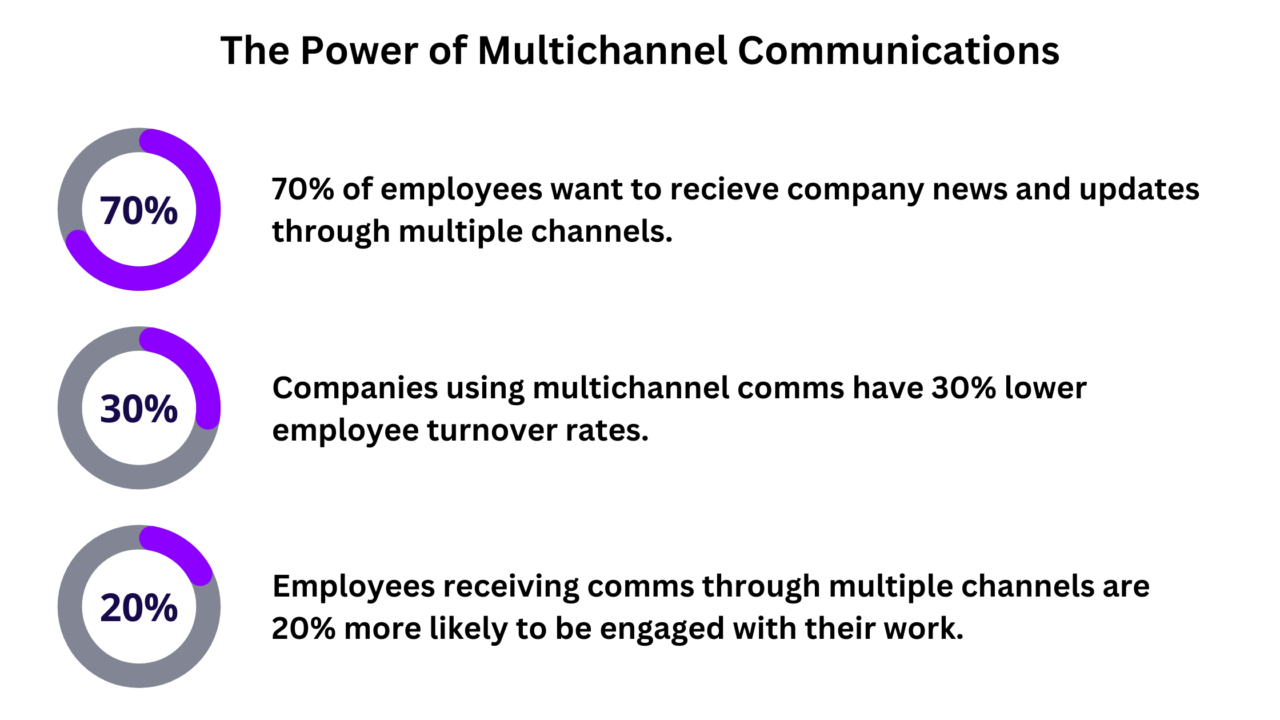
It’s clear that embracing a multichannel approach to internal communications yields significant benefits for organizations. Not only can utilizing the right mix of channels enhance the overall employee experience, it can also foster a more connected and productive workforce.
Common Channels in a Modern Multichannel Communications Strategy
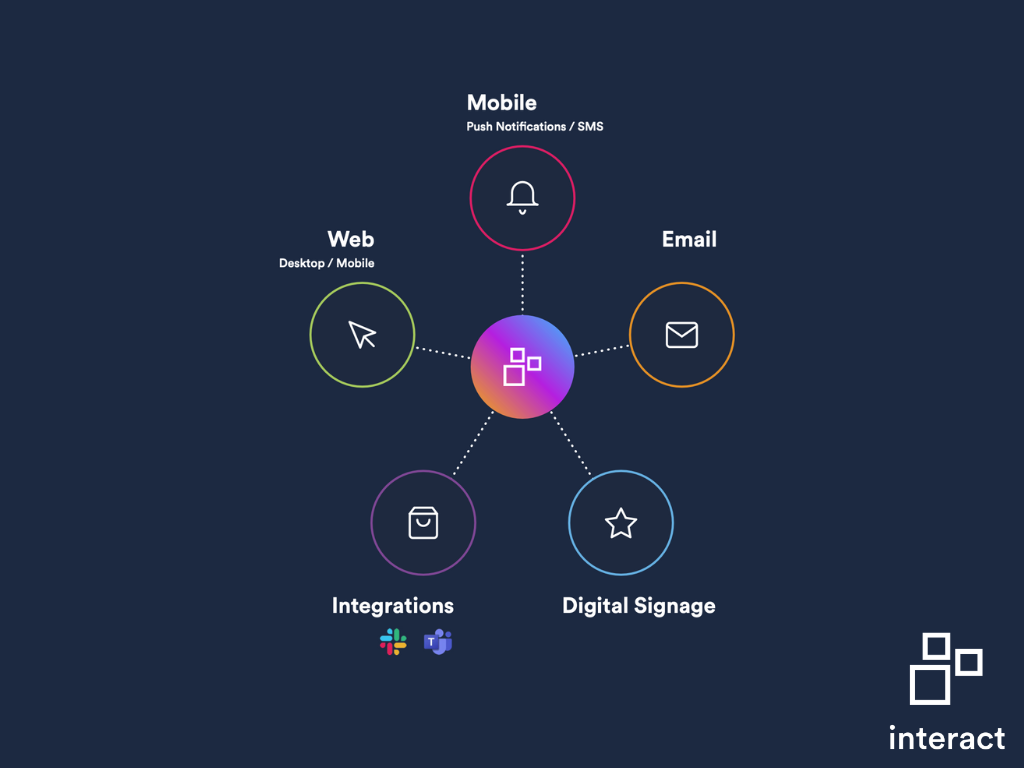
The array of internal communication channels available can be overwhelming, but most organizations running multichannel strategies tend to use a small mix of up to five channels that are anchored to the company intranet, including:
- Employee communication app notifications
- Digital signage
- SMS
- Third-party applications
In these organizations, the multichannel intranet features a Content Management System (CMS) editor that integrates with the communication channels. From here, internal communicators, or anyone with publishing permissions, can deploy, manage, and measure communications across their chosen channel mix. The more advanced organizations will choose different channel mixes for different messaging campaigns based on factors such as the personas they need to reach, the timeliness of the message, and more.
The multichannel intranet not only serves as a central location for hosting information but also enables employees to click through from the message and explore additional content if there is a lot of detail to share.
Multichannel communications: How to plan and execute a strategy
Factors to Consider when Choosing Internal Communication Channels
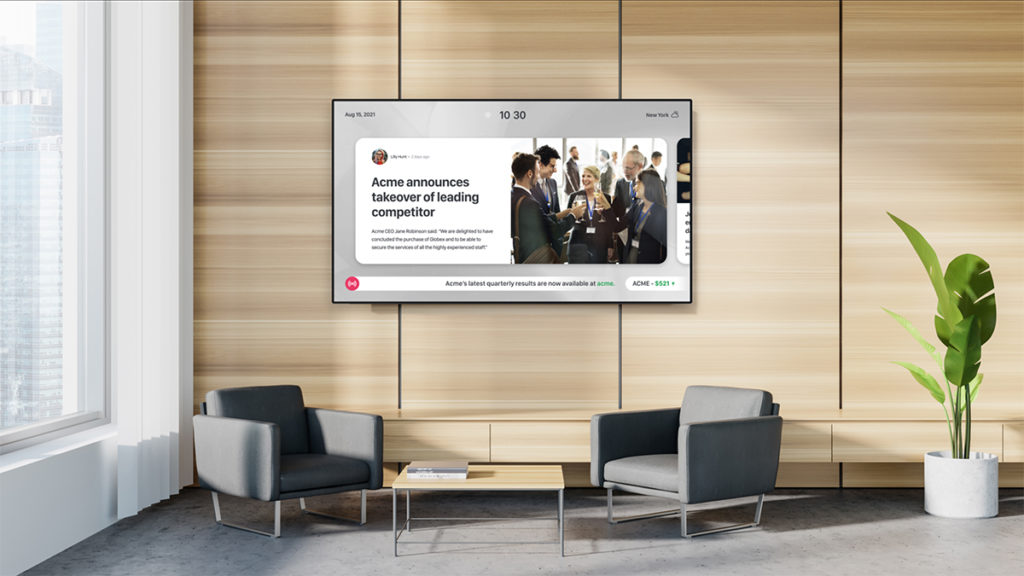
As internal communicators, understanding the strengths and weaknesses of different internal communication channels and using them strategically is crucial. However, choosing the right channels can be challenging, considering the diverse needs of employees in various roles across organizations.
Here are some key factors to consider when choosing communication channels:
1. Formality of the Message
When it comes to internal communications, the level of formality plays a crucial role in ensuring the right tone and impact. For those formal announcements or policy updates that require a corporate tone, consider leveraging internal communication channels such as email or the secure company intranet. These platforms provide the space and structure to convey important information clearly and concisely, instilling a sense of authority and seriousness.
For more casual or conversational communications aimed at fostering a sense of camaraderie and approachability among employees, opt for messaging platforms such as Slack or Microsoft Teams. These real-time communication channels facilitate dynamic interactions, enabling employees to engage in open discussions and collaborate seamlessly, thereby nurturing a vibrant and inclusive organizational culture.
It’s also important to consider when and how to use channels that are owned and managed by the internals comms team, and channels that are owned and managed by employees. All-company comms/culture channels are ideal for broadcasting essential updates, company-wide announcements, and reinforcing the organization’s core values while specific team/theme channels offer a more targeted approach, facilitating focused discussions, collaboration, and knowledge-sharing within relevant groups. Interrupting all channels should be reserved for exceptional situations, such as emergencies or critical incidents that demand immediate attention from everyone within the organization.
2. Urgency of the Message
The speed of communication can make all the difference in ensuring timely responses and actions. For urgent messages that require immediate attention and dissemination, the strategic choice of communication channels is of paramount importance. Short and concise platforms like SMS and messaging applications excel in this domain, swiftly delivering time-sensitive information directly to employees’ mobile devices.
Multichannel communications: How to plan and execute a strategy
These channels cut through the noise, demanding swift responses and actions, making them ideal for critical announcements, emergency alerts, or any situation demanding immediate attention from your workforce. By using SMS and messaging platforms, you can ensure that vital updates reach your employees promptly, reducing the risk of miscommunication and streamlining crisis management. It is important to note that SMS should be reserved for emergencies as employees can perceive receiving work-related comms on their own devices as a crossed personal boundary.
3. Confidentiality of the Message
The security and privacy of internal communications are of utmost significance, particularly when dealing with sensitive or confidential information. Safeguarding trade secrets, personal data, or sensitive business strategies is non-negotiable. For confidential messages, it is essential to prioritize secure internal communication channels that provide end-to-end encryption and robust access controls.
Platforms such as secure intranet software offer the necessary protection and restricted access, ensuring that only authorized recipients can retrieve sensitive information.
By making conscious decisions regarding the communication channels you employ for confidential matters, you can foster a culture of trust and confidence among your employees, knowing that their sensitive data is safeguarded as well as the company’s.
4. Size of the Audience
One size does not fit all when it comes to internal communication, especially considering the diverse employee base of modern organizations. The size of your audience significantly impacts the efficiency and reach of your chosen communication channels. For larger groups, employing communication platforms that can efficiently disseminate information to everyone simultaneously becomes crucial.
Digital signage and company-wide employee apps present themselves as excellent options in this scenario. Digital signage strategically placed in high-traffic areas can capture the attention of a broad audience, making it ideal for announcements, updates, or events that require widespread visibility.
Additionally, company-wide employee apps act as a centralized hub, granting employees quick access to news, resources, and real-time updates, regardless of their location or department. Embracing these audience-tailored channels ensures that your messages resonate across the organization, fostering a cohesive and well-informed workforce.
5. Required Response
As the focus on employee listening continues to grow, it’s important to ask whether you are deploying a one-way or two-way communication.
If a response is required from a smaller group, then you may wish to share it via a channel on which recipients can respond easily. If the recipient group is larger, you may wish to manage the incoming traffic and management of responses by providing a link to a form where everyone’s response can be submitted. This is also the best option for a communication that requires a confidential response.
Internal Communication Channel Considerations for Different Sectors
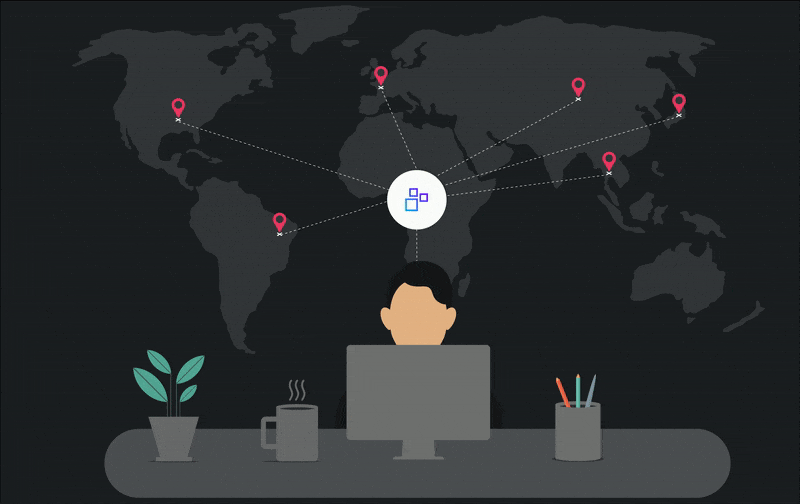
Every sector has its own distinct characteristics, communication needs, and workforce demographics that shape the most effective internal communication strategies.
Understanding these nuances can empower communicators to tailor messaging approaches and channel selections to maximize engagement, collaboration, and information dissemination.
Desk-Based Organizations
- Employee App Notifications: Desk-based organizations can employ dedicated employee communication apps to reach employees when they’re offsite or away from their desks.
- Email: Email remains a staple for formal communication, sharing detailed information, and attaching relevant documents, but has taken a back seat behind third-party applications that enable desktop and mobile chat and collaboration.
- Third-Party Applications: Third-party tools such as Slack and Microsoft Teams integrated with multichannel intranet software allow communications to be published to specific channels, such as those that include all employees or belong to specific teams and workgroups.
- SMS: Desk-based organizations typically reserve SMS as a channel for urgent news and emergency communications.
Multichannel communications: How to plan and execute a strategy
Manufacturing
- Digital Signage: In manufacturing plants and facilities, digital signage can be utilized to display targeted and company-wide messages to all employees on the floor.
- SMS: SMS alerts are typically reserved for urgent communications, such as equipment malfunctions, safety alerts, or schedule changes.
- Employee App Notifications: Employee mobile apps can be used to keep manufacturing teams informed about production updates, maintenance schedules, and shift changes.
- Email and Third-Party Apps: For desk-based employees with regular computer access, email and messaging apps such as Teams or Slack are the most effective internal communication channels.
Hospitality
- Employee App Notifications: Fewer employees in hospitality are desk-based, so employee app notifications are effective for reaching many personas such as porters, housekeeping, entertainment team members, and facilities management workers.
- Email: Email may be an effective channel for reaching front-of-house and desk-based staff, especially with information that is more detailed and less timely.
- Third-Party Apps: Third-party apps such as Slack and Teams can be used to reach front-of-house and desk-based employees with shorter, time-critical comms.
- Digital Signage: Employees who are not desk-based and unlikely to check their phones– but who typically work in staff-only areas (such as kitchen staff) – may be better reached through digital signage.
- SMS: SMS can be reserved for alerts to staff for emergencies and urgent matters.
Healthcare
- Employee App Notifications: This is an ideal channel for deploying real-time updates and announcements for all healthcare staff.
- Email: In healthcare, email is better suited for sharing detailed formal and less critical or timely communications.
- Digital Signage: Digital signage can be utilized for sharing critical messages and safety guidelines in staff-only areas.
- SMS: SMS can be used for urgent and time-sensitive communications.
- Third-Party Applications: Applications such as Slack and Teams are valuable for time-sensitive and less-detailed communications.
Retail
- Employee App Notifications: Notifications via the employee app are ideal for real-time updates and announcements to keep store-based employees who don’t necessarily have access to computers informed and updated.
- Email: Email is better for formal communication, policy updates, and less time-critical company-wide messages.
- Digital Signage: Digital signage in staff-only areas can keep employees updated when they don’t have access to a mobile device during their shift.
- SMS: SMS should be reserved for time-sensitive alerts and messages to retail staff for urgent updates and announcements.
A Direct Channel to Success
As you navigate the vast landscape of internal communication channels, remember that each message carries the potential to shape your company’s culture, foster collaboration, and drive success. By understanding your audience, carefully choosing the right channels, and considering the unique characteristics of your organization and sector, you can create a communication strategy that resonates deeply with your employees, propelling your organization towards a more connected and prosperous future.
For more information on selecting and testing your internal communication channels, take a look at some of our other articles:
- How to create a multichannel communication strategy
- How to use a communication matrix in your internal comms plan
- Why an emergency communications plan demands a multichannel approach
Main image by jcomp on Freepik.
